As part of my auricular feather study I was fortunate to examine a Barn Owl carcass. Cornell University’s “All About Birds” website description highlights the Barn Owl’s ability to locate prey by sound alone is the best of any animal to be evaluated. Multiple experiments of Barn Owls indicate that they can secure prey in total darkness1. As such, I will use it as the auricular baseline for comparing other species in the study. There are many specializations, besides the auriculars, that make this species’ mastery of its sound environment the best in the avian world. There are 254 owl species in the world that come from two families, Tytonidae (20) and Strigidae (234). Of the nineteen North American owls, only the Barn Owl is part of the Tytonidae family. The two families are distinguished by a circular face for the Strigidae and a heart shaped face for the Tytonidae.
Silent Flight
Sound is a side effect of flying and is an indicator of wasted energy. The Barn Owl wing is built for silence and efficiency, incorporating a number of specialized sound suppressing features. The lack of flight sound facilitates a low hearing threshold and prevents alerting prey to its presence. The wing is large compared to body mass (low wing load) and has a low aspect ratio (wing span divided by wing width) allowing for slow flight thus reducing sound. This suggests an adaptation to their hunting allowing for high maneuverability2. Owl primary feathers are also more porous than other species due to lesser density of the barbuals3.
In addition there are three sound suppressing specializations on the lead primary feather (P10) as shown in figure 1, left to right, leading-edge serrations (fimbriae), trailing-edge fringes, and a dorsal velvet-like surface.
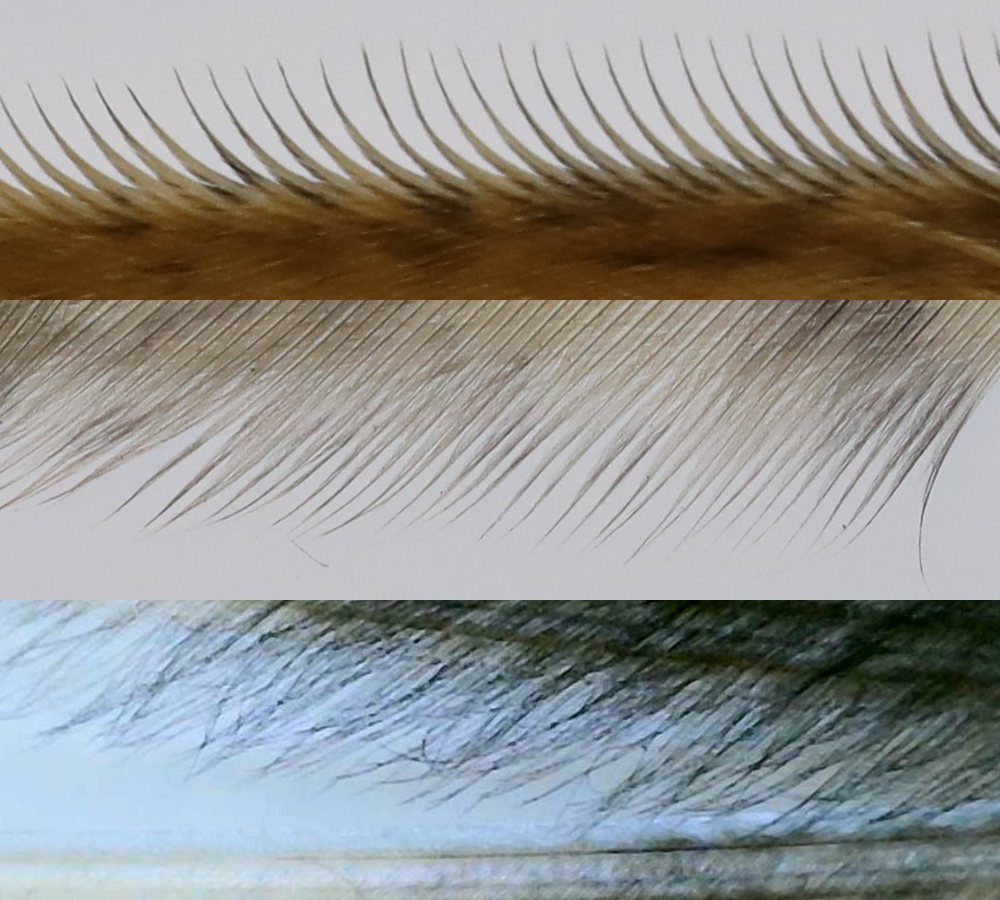
Figure 1. Barn Owl Primary
Leading edge serrations are found on some other species such as the family Podargidae (the frogmouths) and the kakapo, a flightless parrot of New Zealand, but they don’t have the combination of attributes found in the owl. For owls, the structure requires a detached barb tip, the tip bends away from the rachis, as well as twisting and bending upwards2. The Barn Owl’s P10 is unusually long, equaling the length of P9, so that it’s the only feather to form an entire leading edge of the wing, unique for North American raptors. This results in serrations only on its leading primary (P10) while other owls have serrations on the exposed sections of P9 – P7. When the serrations were removed, the airflow over the wing changed from laminar to turbulent3.
Trailing-edge fringes form at the tip of the barbs and have plumulaceous like property of no hooklets. The fringe merges tightly with groves formed by adjacent barb shafts of the feather it is resting against when subjected to air flow. This allows for the formation of a single trailing edge behind the wing rather than several trailing edges for each primary. The reduction of trailing edges reduces the number of sound producing sources. “Trailing edges are a major sound source in aeroacoustics2.”
Dorsal velvet, called pennula, covers the upper surface of the remiges (flight feathers) and rectrices (tail feathers). Pennula are hair-like extensions of barbules and are long enough to overlap four adjacent barbs. They are longer and more well-developed where feathers overlap making remiges soft to the touch. Frictional noise causes a broadband (across all frequencies) increase in flight sounds. A substantial portion of flight noise comes from feathers rubbing against each other during flapping flight. Through experimentation, flight noise was 14 dB higher without the velvet4.
Bare Meatus
The meatus (opening to the ear canal) is distinctive (Figure 2). Of the 45 bird species in the auricular study, the Barn Owl is the only one where the skin was bare around the opening. The meatus is in a trough between the ruff and the operculum and is surrounded by thinly dispersed and highly specialized sonus feathers (auricular morphotype).
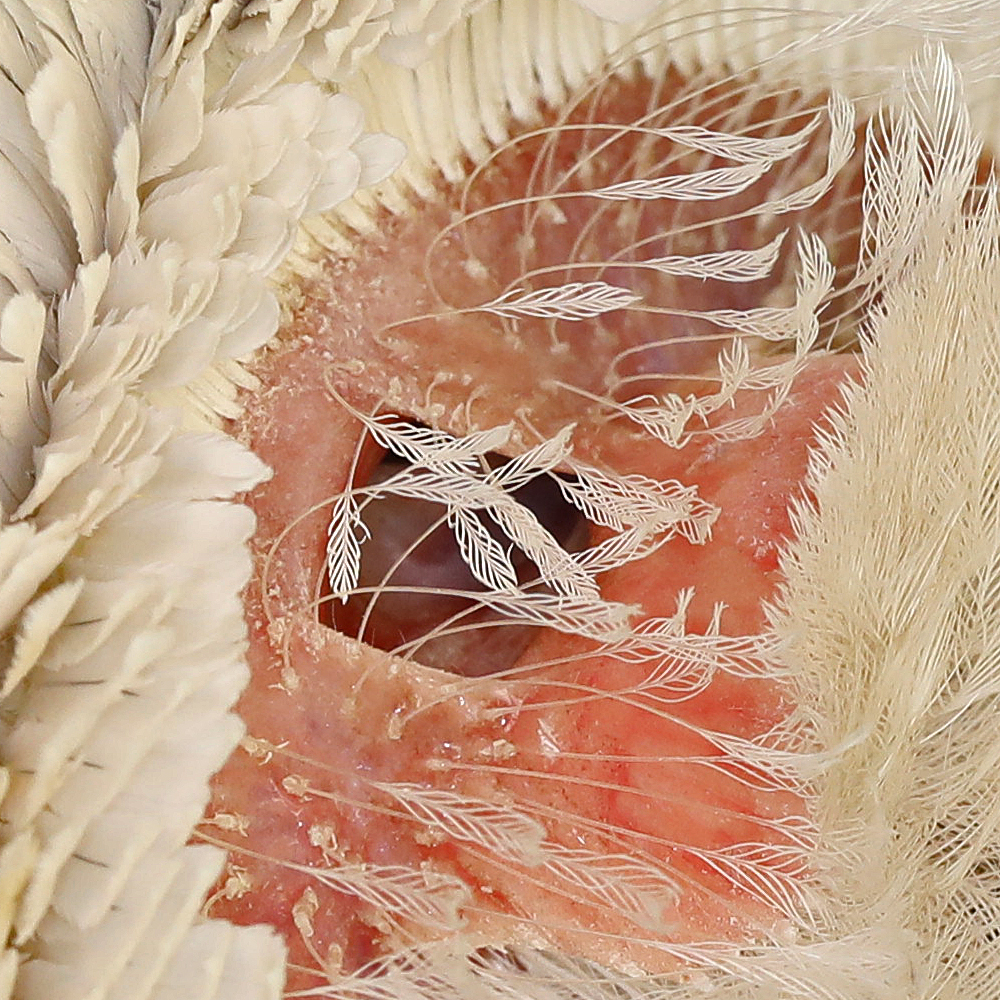
Figure 2. Barn Owl Meatus
The graph in Figure 3 shows the relationship between the area of the meatus and the skull volume for the species in the study. Note that as the skull reduces in size (left end of X-axis) the meatus becomes relatively larger (top end of Y-axis). This indicates that there is a limit to reduction in meatus area as the skull gets smaller. The meatus of a hummingbird is six times larger than an ostrich on a relative scale.
The blue diamonds in figure 3 represent owl species. The two blue diamonds in the lower left of the graph belong to diurnal owl predators. Their meatus area fits with other bird species of similar size. The nocturnal and crepuscular owls all show a larger meatus area relative to skull size. The only species with a higher ratio is the Greater Roadrunner. The Great Horned Owl and Ostrich pictures on the graph are relative to where they fall on the Y axis as their skull volumes are extremes on the distribution, 96k mm3 and 550k mm3. An update to this analysis, can be found in this article: Meatus Scaling
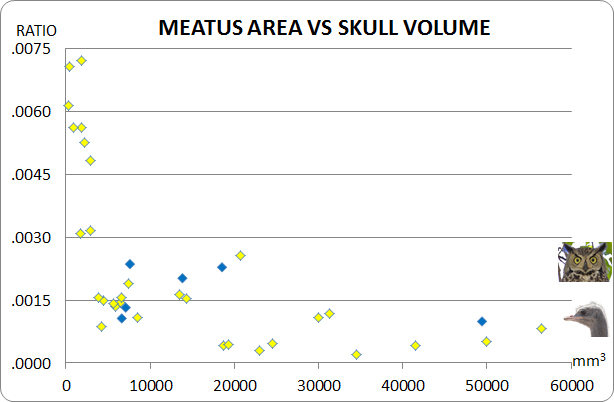
Figure 3. Meatus Area vs Skull Size
Operculum
Barn Owls have an operculum (Figure 4) in front of the meatus (pre-aural flap) that is larger than the aperture. In the order Strigiformes, the operculum is limited to the family Tytonidae. In the Barn Owl, it is covered by four rows of feathers on the ventral side with none on the dorsal side. The operculum can be moved independently and is constantly being fine-tuned to maximum auditory quality as the Barn Owl hunts5. Through experimentation, the movement of the flaps changed sound pressure by only 3 dB. Speculation was that the operculum only shielded the ears from wind sound or functioned as a protective feature7.

Figure 4. Barn Owl Operculum
An in-depth anatomical study (Figure 5) of the operculum and ruff was performed by Witmer Lab at Ohio State University.

Figure 5. Raised Barn Owl operculum
Asymmetrical Ears
Figure 5 also highlights the asymmetry of the Barn Owl’s ear openings. This asymmetry is limited to the external facial features as the Barn Owl skull is symmetrical (Figure 6). The ears are offset equally to the horizontal plane. The asymmetry results in a left ear canal being longer. The sound reception offset allows for improved localization. Seven of the 19 North America owls have asymmetrical ears5. Some owls, like the Boreal, show severe skull asymmetry.
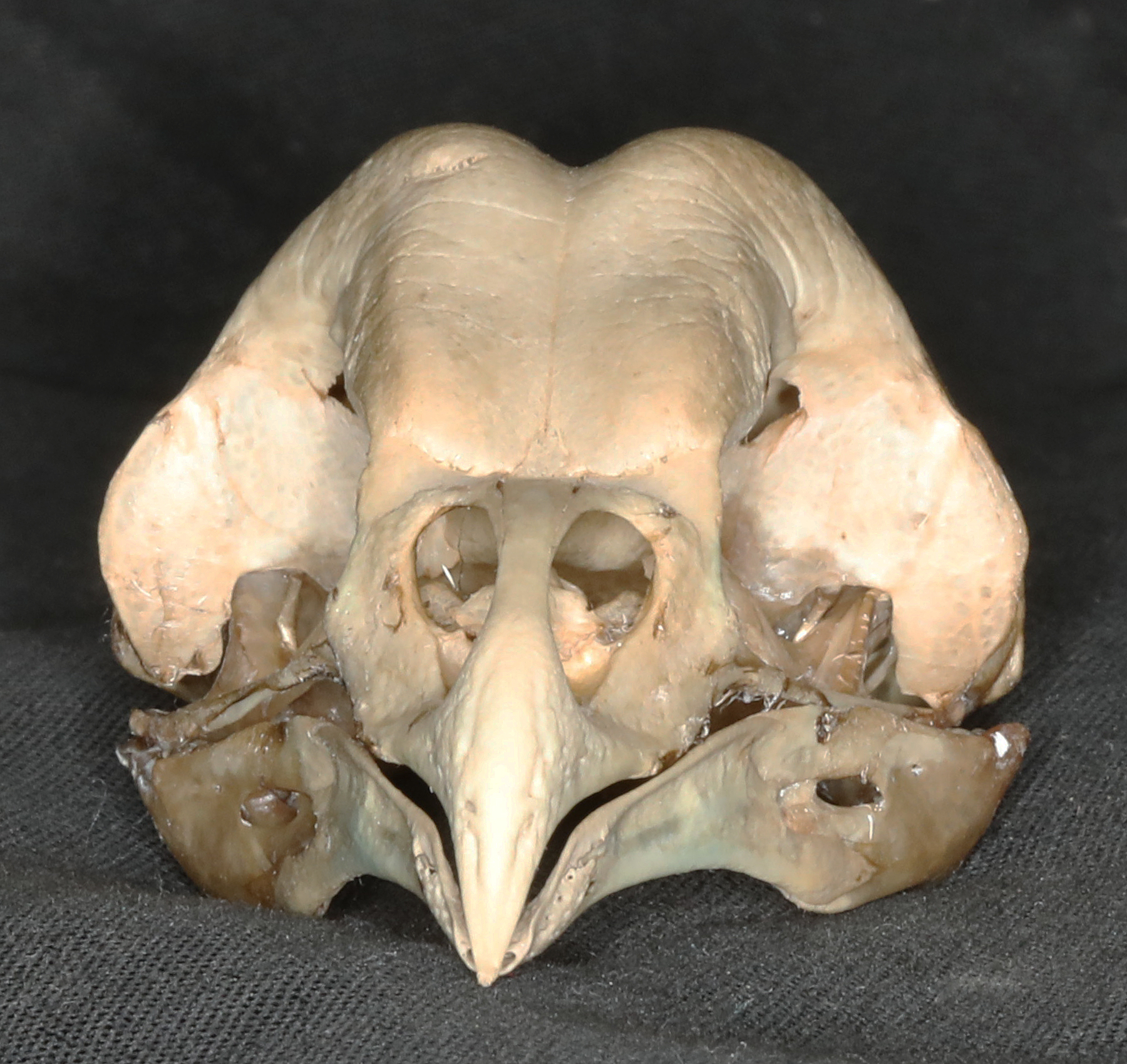
Figure 6. Barn Owl skull
Ruff
The Barn Owl can localize prey with extreme accuracy in both elevation and azimuth without moving its head6. There are specific attributes of the face that facilitate hearing ability, among them is the ruff. The ruff, named after the decorative collar worn in England, is a conspicuous ring of stiff densely packed feathers that border the face (Figure 7). The ruff feathers grow at a 90o angle to the skull making it an effective wall to reflect sound. When the owl is not attentive, the ridge broadens.
Not apparent in photos, the ruff extends between the eyes down to the top of the beak, dividing the face in half. It is pervasive in literature that the facial disc is a parabolic dish. In fact, there are two flat facial discs that meet over the beak at an angle of about 50o to the midline7. Each ruff acts like a funnel, similar to putting your hand behind your ear. Figures 2 and 4 show the ruff and how close the meatus and operculum is situated to it.
At a height of 6-8 cm, the ruff reflects sound at greater than 3 kHz. Through experimentation, removal of the ruff did not impact azimuth, but did negate the ability to determine elevation6.

Figure 7. Facial disk feathers removed6
Filoplumes
Early in the feather study was the introduction of filoplumes. These are hair-like structures with small tufts at the end. It was surprising to see a profusion of these feathers directly above the bill (Figure 8). They are sensory feathers that provide information on temperature, air pressure, wind speed, and feather condition. None of the scientific studies mention filoplumes on the facial disc. The other six owl species in the study8 did not display this morphology.
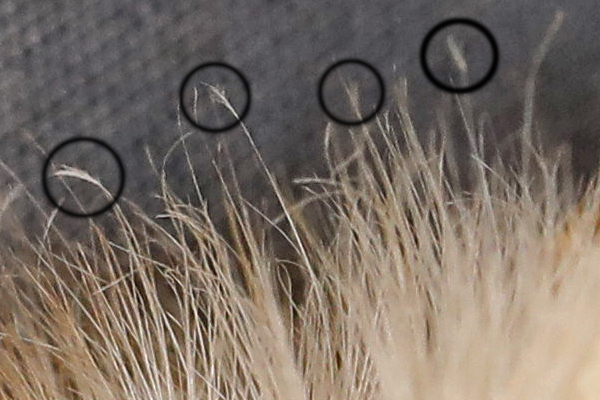
Figure 8. Barn Owl filoplumes on facial disc
Sonus Feathers
Auricular feathers, or ear coverts, come in a number of feather types (bristle, filoplume, sonus)9. The sonus feather is not only an ear covert but found on the facial disks of owl species. Owls have various sonus morphotypes across their facial disks. They are found above the eye, behind the meatus, and on the cheek. The Barn Owl exceeds the other owl species in the study8 in the use of this feather across its facial disk. The feathers were sampled in the areas indicated in Figure 9.

Figure 9, feather sampling locations
The feathers above and below the beak and eye (# 3, 4, 5, 6) were unremarkable. All four locations had bristle feathers with standard morphotypes of non-branched above and below the beak and branched around the eyes (Figure 10). The remaining locations produced outstanding sonus examples. Outside of Struthioniformes, like ostriches, that have bristles as auriculars and individual species like the Wood Stork and vultures that have no ear coverts at all, most species have morphotypes of the sonus feather to cover the meatus. The Barn Owl, with the sonus feather covering the entirety of the facial disc, relates to the sound properties of this unique feather type.
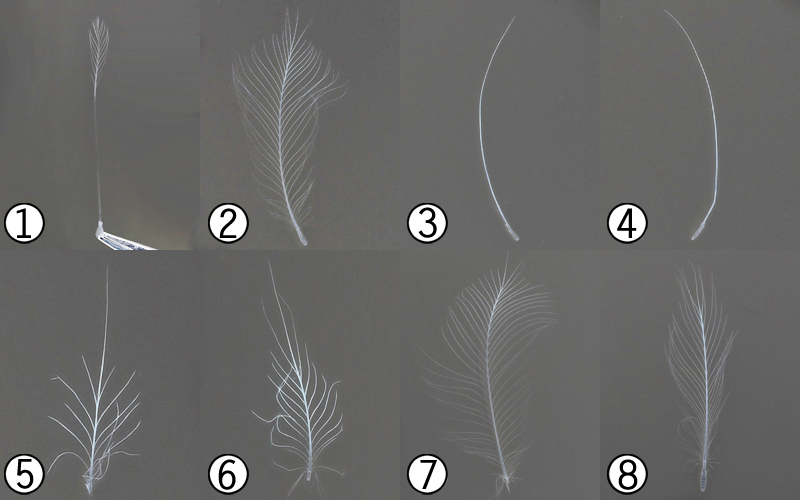
Figure 10. Barn Owl sampled feathers
The label of auricular feather for a Barn Owl is a bit of a misnomer as it is the operculum that covers the meatus. An unusual sonus morphotype sparingly surrounds the meatus behind the operculum (#1 in Figure 10 and Figure 2). The sonus feathers that cover the operculum (Figure 11) have a very simple and clean structure making it a great benchmark to compare with other species. Note that the rachis (feather shaft) does not extend beyond the vane like a bristle feather. Although the spacing of the Barn Owl’s barbs is the highest of the species studied, that spacing is relative to the length of the feather. Two dove species studied have twice the amount of space between barbs relative to rachis length. Not evident in isolation, the Barn Owl’s sonus feather is the longest relative to skull length of the 45 species studied.
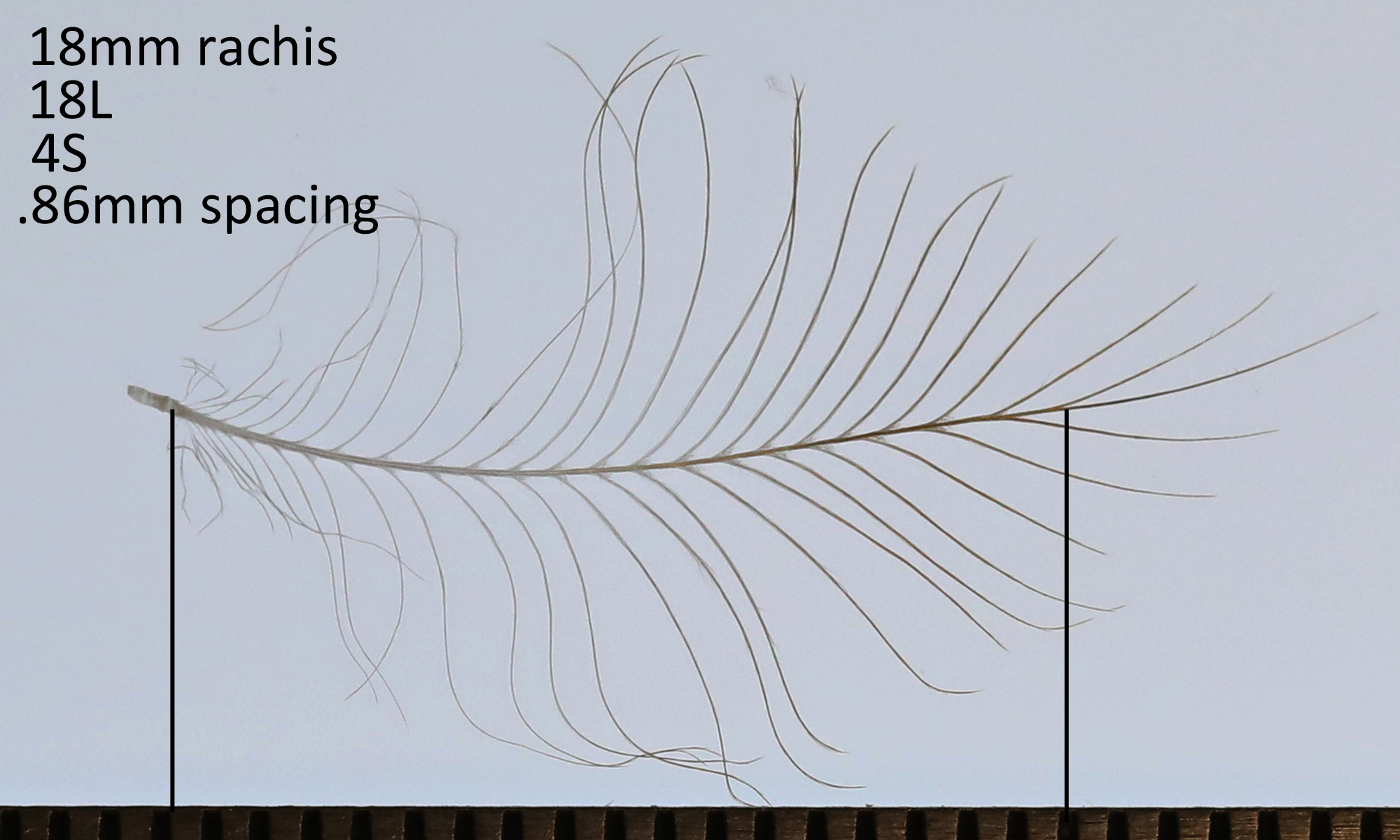
Figure 11. Barn Owl auricular
The width of a sonus feather is difficult to measure once plucked. The wispy nature of the feather allows for static electricity to have a significant impact on how the feather rests when not on the bird. Figure 12 shows the sonus feather before being plucked. Note the shape versus how it displays in figure 11. Future specimens will have the width measured before plucking and a further study on barb length will be undertaken.

Figure 12. Barn Owl sonus feathers
At first glance (figure 11) the barbs on the sonus feather look to be clean. At 300x magnification (figure 13) the barbules and associated radiates can be seen. The barbules come off the barb at a minimal angle and have not developed well enough to separate.

Figure 13. Barn Owl distal end of sonus showing length
at bottom
Summary
Sound is important to both the hunter and hunted. The specializations exhibited on the Barn Owl make it the natural baseline for comparing sound related adaptations of other avian species. Auricular feather functions are generally agreed to be sound reflectors, dust protectors, and wind dampeners. Further research will show how various species have adapted to their sound environment and challenge the assumptions surrounding these unique feathers.
Addendum
The findings of the Barn Owl sonus feather morphology, especially on the microscopic scale, sonus feathers (Figure 14) show various radiates, shapes, and densities that obviously have a functional component. The Barn Owl’s (BANO) sonus is open and clear of radiates on the barbs making them optimal for sound while the Curve-billed Thrasher (CBTH) has extensive barbule growth due to its dusty feeding methods.
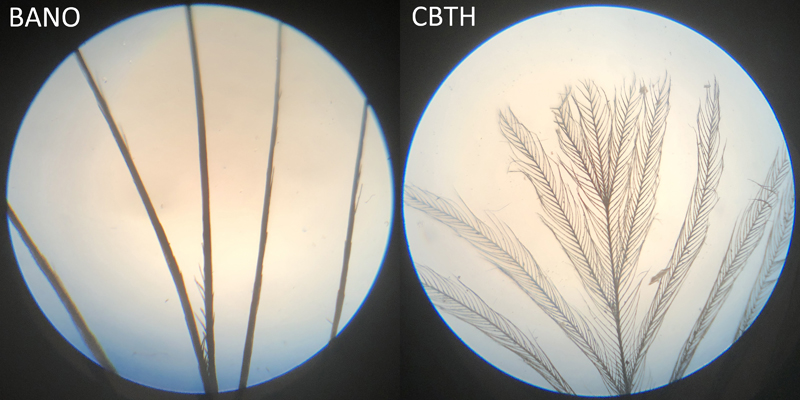
Figure 14. Sonus distal end at 50X magnification
The Ferruginous Pygmy Owl is a diurnal hunter so silent flight is not a requirement. Possible diverging evolution has nearly eliminated the serrated edge silencing feature.
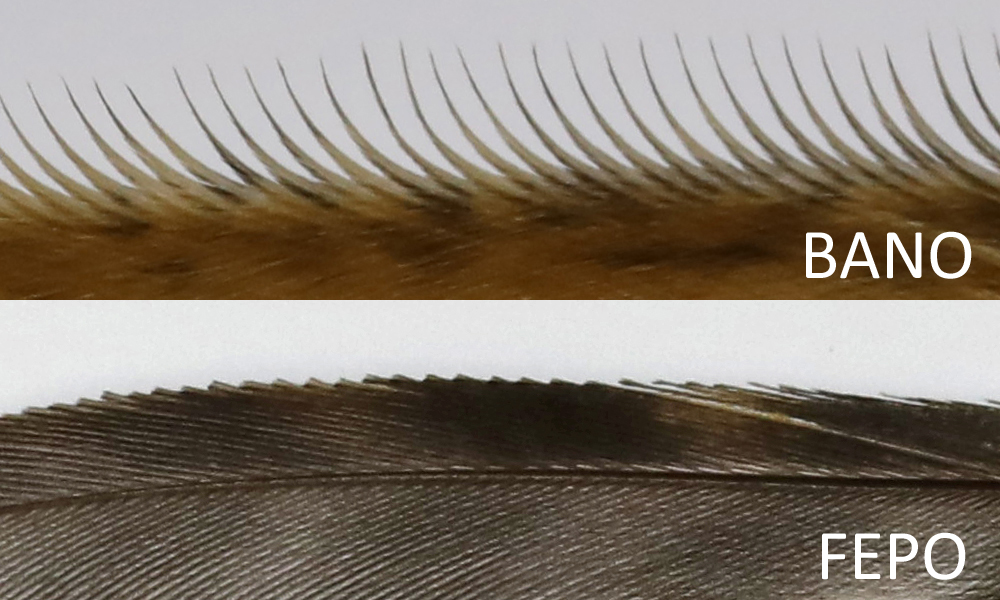
F15 P10 serration comparison
The Barn Owl p10 is same length as P9, figure 16 illustrates the P10/P9 of the Great Horned Owl. Since P9 is longer than P10, P9 also has a serrated edge to ensure silent flight.
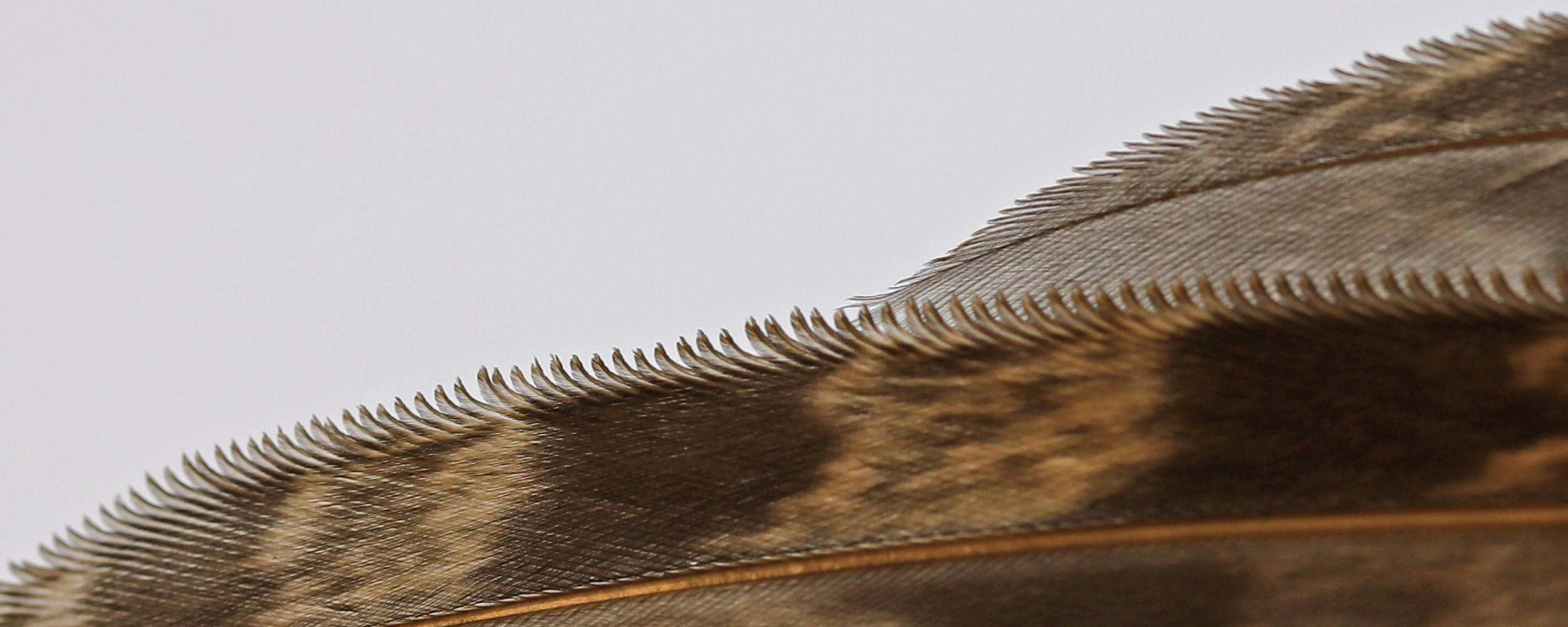
F16 Great Horned Owl P10 top, P9 bottom serrations
Instead of an operculum, the other six owl species, to varying degree, employ feather tracks (pterylae). In the Western Screech Owl (WESO) example (Figure 17) is a series of five photos highlight the tracks with the meatus at the bottom. Reiterating that birds can elevate their feather shafts, I imagine that these tracks work much like the operculum on the Barn Owl. All non-owl species in the study had unpatterned placement of the auriculars.
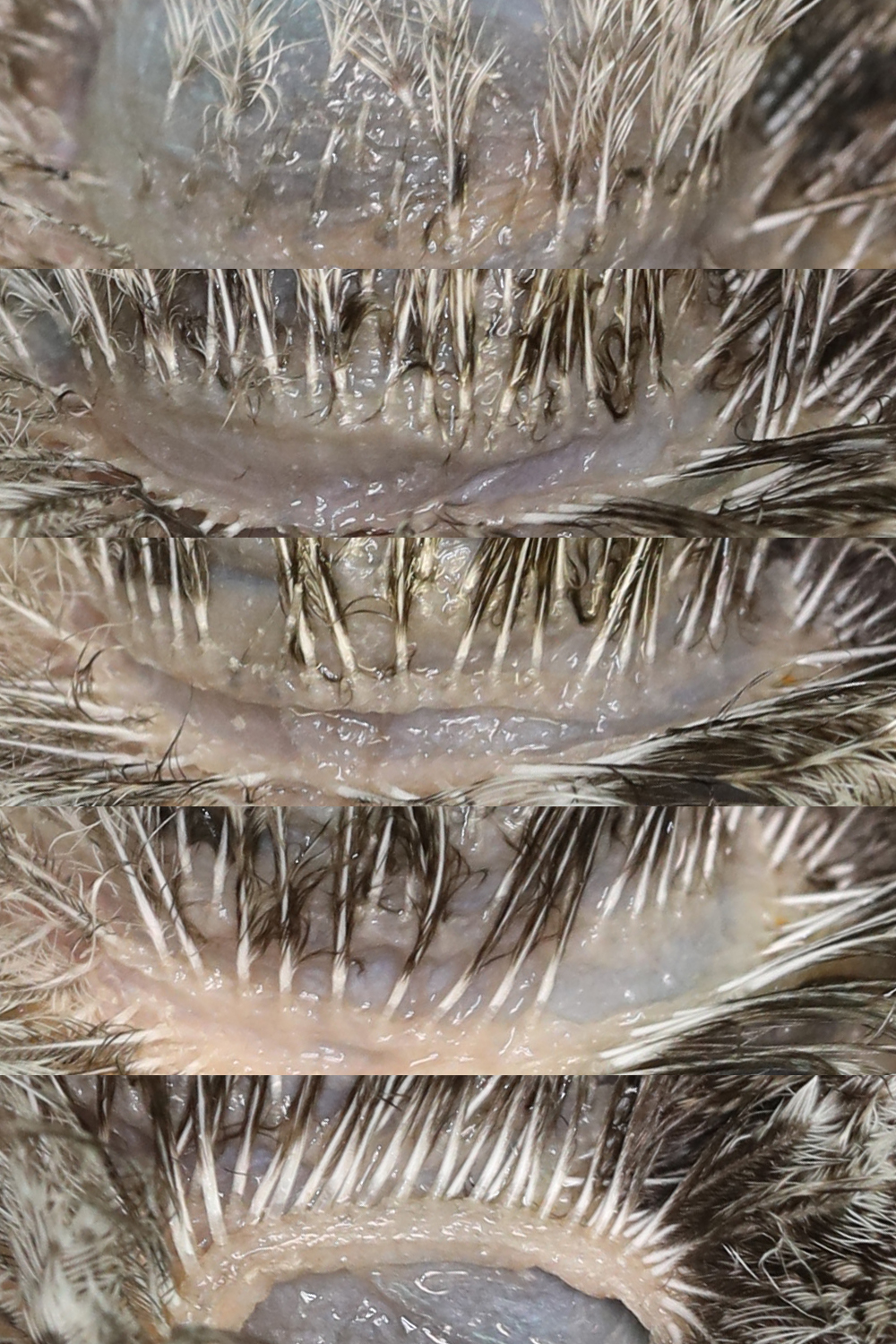
Figure 17. WESO meatus coverage
References
1 Konishi, M. (2012) How the Owl Tracks Its Prey. American Scientific, Vol 100, Issue 6, pg 494
2 Wagner H, Weger M, Klaas M, Schro¨der W. (2017) Features of owl wings that promote silent flight. Interface Focus 7:20160078. http://dx.doi.org/10.1098/rsfs.2016.0078
3 Bachmann, T, Klän, S, Baumgartner, W, Klaas, M, Schröder, W, and Wagner, H. (2007) Morphometric Characterization of Wing Feathers of the Barn Owl Tyto Alba Pratincola and the Pigeon Columba Livia. Frontiers in Zoology 4,23.
4 LePiane, K, Clark, C. (2020) Evidence that the Dorsal Velvet of Barn Owl Wing Feathers Decreases Rubbing Sounds during Flapping Flight. Integrative and Comparative Biology, volume 60, number 5, pp. 1068–1079
5 Sieradzki, A. (2022) “Designed for Darkness: The Unique Physiology and Anatomy of Owls”, Owls – Clever Survivors, IntechOpen, doi:10.5772/intechopen.102397
6 Knudsen, E, and Konishi, M. (1979) Mechanisms of Sound Localization in the Barn Owl. Journal of Comparative Physiology 133, 13-21
7 Coles RB, Guppy A. (1988) Directional hearing in the barn owl (Tyto alba). Journal of Comparative Physiology A. 1988;163:117-133
8 Owls in study — Burrowing Owl (crepuscular), Barn Owl (nocturnal), Ferruginous Pygmy Owl (diurnal), Flammulated Owl (nocturnal), Great Horned Owl (crepuscular, nocturnal), Northern Pygmy Owl (diurnal), Western Screech Owl (nocturnal)
9 van Wallene, M. (2023) There Are Nine Types of Feathers. The Cactus Wren-dition volume 69 number 2, 14-18
